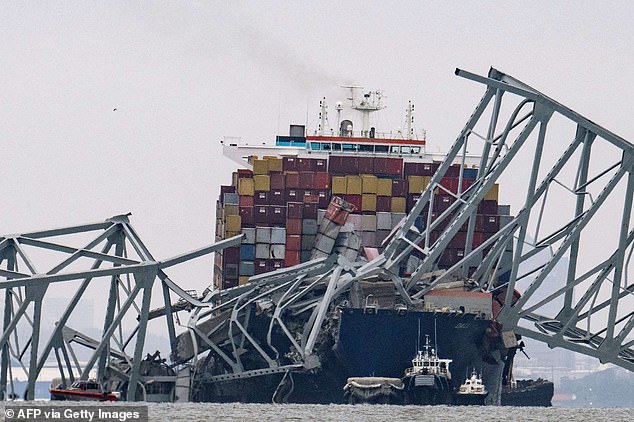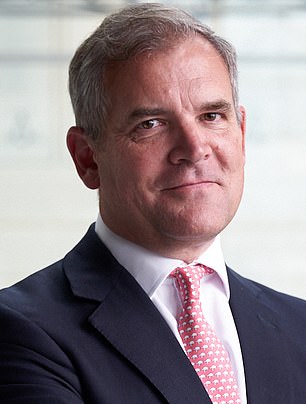<!–
<!–
<!– <!–
<!–
<!–
<!–
The chairman of Lloyd’s of London has warned that the collapse of the US’s Baltimore Bridge could be the biggest ever marine insurance loss.
Bruce Carnegie-Brown said Lloyd’s will pick up a large chunk of the billion-dollar bill after a huge container ship crashed into the Francis Scott Key Bridge.
He did not put a number on the total. Analysts have suggested the figure could exceed £3 billion. Lloyd’s could get hold of about 10 percent.
The previous record marine insurance loss of £1.2 billion occurred when the luxury cruise ship Costa Concordia capsized off the coast of Italy in 2012.
Carnegie-Brown said of the Baltimore crash: “It’s still early, but I think this could develop into the largest single marine insurance loss ever. It will take a few years for it to fully develop, but we expect it to be a significant loss and we will get our share of that.”

Bridge collapse: Lloyd’s of London will claim a large chunk of the billion-dollar bill after a huge container ship crashes into the Francis Scott Key Bridge
It came as the insurance market, which has more than 50 member firms, swung to a profit of £10.7bn in 2023 after losses of £800m the year before.
Lloyd’s has enjoyed a revival on the investment side of its business, but also in its insurance business, where it increased prices by 7 percent in response to inflation, pushing up the cost of paying out claims.
Insurance profits rose from £2.6 billion to £5.9 billion.
The combined ratio – a key measure of profitability where anything above 100 percent indicates a loss and anything below a profit – improved from 91.9 percent to 84 percent, the best level since 2007.
Major claims for the year included bushfires in Hawaii, earthquakes in the Middle East and floods in New Zealand, worth a total of £1.3 billion, down from £4.1 billion in 2022.
The Baltimore claim can make a big dent because it is fully insured.
Other disasters may be more expensive overall for companies, states, or individuals, but are less well covered by insurance.
“People buy more insurance in the U.S. than in most other economies,” Carnegie-Brown said.


Challenges: Lloyd’s of London boss Bruce Carnegie-Brown
“The bridge is owned by the state of Maryland and states and governments don’t normally buy insurance, but Maryland does – the bridge is insured.
‘Then of course there is the value of the ship and its cargo. And what will develop more slowly, but will be quite significant, are all the supply chain challenges that will arise as a result.
“The ships that are stuck in the port and cannot get out and the ships that traveled to the port and have to be diverted will generate second-order claims.
“It’s the largest port for vehicle imports in the U.S.”
Meanwhile, he complained that the London market was losing out to global rivals because of regulators’ cautious approach since the financial crisis.
He said companies wanting to register with Lloyd’s had to wait nine to 12 months for approval, while in Bermuda this could happen within 30 to 60 days.
Carnegie-Brown said that since the crisis, regulators have become accustomed to looking for risks rather than being open to opportunities.
“When you’ve spent 15 years trying to take risk out of the system, it’s very difficult to change your mind about this,” he said.
‘It’s a bit like when you park your defense in a football match to get a no-score draw and then the opponent scores.
“It’s quite difficult for you to change your mentality to get to the other side of the pitch and score a goal.”
